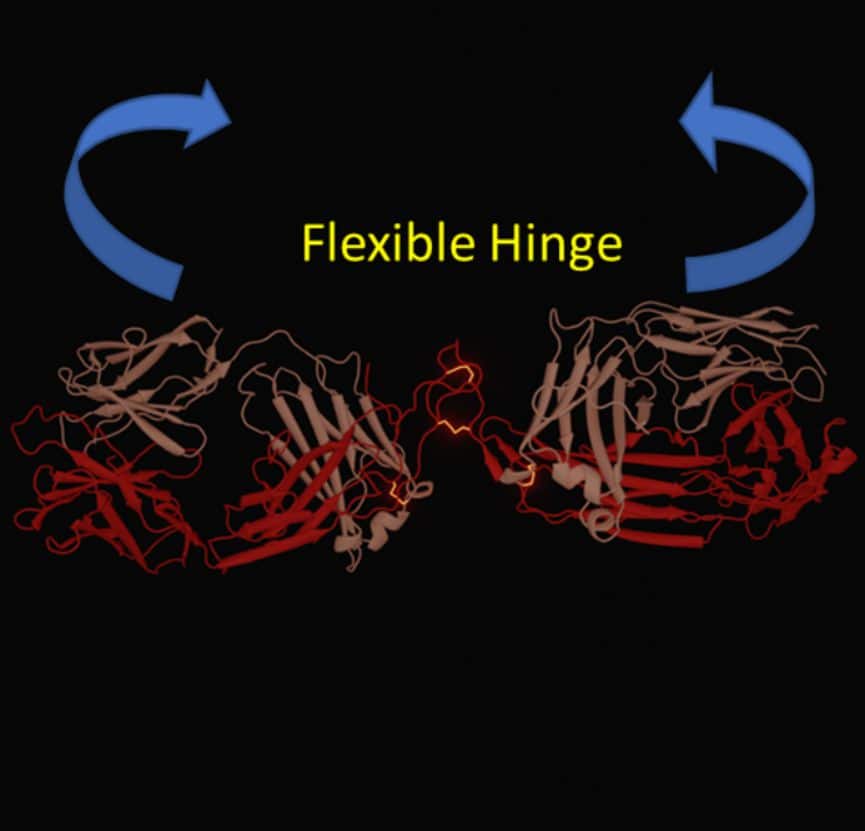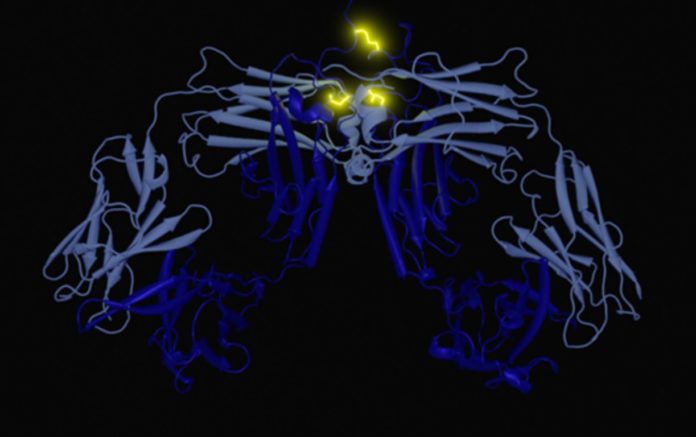Researchers from the University of Southampton have learned more than ever before about what makes an antibody so important for fighting cancer.
The multidisciplinary research, which was published in Science Immunology, showed how altering the antibody’s flexibility could boost the immune response.
Based on what they found, the Southampton team was able to make antibodies that “fire up” important receptors on immune cells to make them work better against cancer.
The experts believe their findings may help to advance antibody-based treatments for cancer and other autoimmune illnesses.
To combat cancer, the research team examined antibody medicines that specifically target the CD40 receptor. Because no one knows how to stimulate the receptors at the right level, it has been hard to make progress in the clinic. The problem is that antibodies can become toxic if they become too active.
Previous research conducted at Southampton has demonstrated that a specific type of antibody called IgG2, which is more active than other antibody types, is ideally suited as a template for pharmaceutical intervention. But the reason why it is more active hasn’t been found yet.
What was known, though, was that the structure of the hinges between the arms of an antibody changes over time.
This new research takes advantage of this property of the hinge and shows how it works. Scientists call this process “disulfide-switching.”
The Southampton team examined the impact of changing the hinge and investigated how disulfide flipping affects antibody structure and activity using a combination of biological activity testing, structural biology, and computational chemistry.
Associate Professor of Structural Biology at the University of Southampton, Dr. Ivo Tews, says: “Our approach was to analyze the structure of the antibody in atomic detail, using the method of X-ray crystallography.

“While the resulting picture is very accurate, the information on how they move their ‘arms’ is missing, and we needed an image of the antibody in solution, for which we used an X-ray scattering approach called SAXS.
“We then used mathematical models and a chemical-computing approach to analyse the data, using the Southampton High Performance Computing cluster IRIDIS.”
The team discovered that more compact, rigid antibodies are more active than their flexible counterparts through this thorough examination of the hinge.

According to Professor Mark Cragg of the University of Southampton’s Centre for Cancer Immunology, “This study has given us new information about how to engineer antibodies to deliver a better immune response.
“We propose that more rigid antibodies enable the receptors to be bound closer together on the cell surface, promoting receptor clustering and stronger signalling for activity. This means by modifying the hinge we can now generate more or less active antibodies in a more predictable way.
“Excitingly, our findings could have wider implications as it may provide a highly controlled and tractable means of developing antibodies for clinical use in future immunostimulatory antibody drugs.”
Image Credit: University of Southampton
You were reading: Here’s How We’re Fighting Cancer in a Completely New Way
